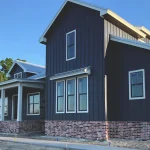Cultured stone, also known as manufactured stone or faux stone, is a remarkable building material designed to closely resemble natural stone. Its fascinating history dates back to the mid-20th century, driven by the demand for affordable and lightweight alternatives to traditional stone in construction and design. Let’s delve into its journey:
- Early Developments (1950s-1960s):
- The concept of cultured stone emerged in the United States during the 1950s and 1960s.
- Initially, it was primarily made from concrete, aggregates, and iron oxide pigments to mimic natural stone.
- Early versions often involved hand-cast molds to create individual pieces.
- Advancements in Production Techniques (1970s-1980s):
- The 1970s and 1980s witnessed significant improvements in manufacturing techniques.
- Companies developed sophisticated molds and processes, enhancing quality and realism.
- Cultured stone gained traction due to its cost-effectiveness and design flexibility.
- Popularity and Market Growth (1990s-2000s):
- Builders, architects, and homeowners increasingly recognized the benefits of cultured stone.
- Lower installation costs and reduced weight made it easier to handle and transport.
- A wide range of colors, textures, and styles suited diverse architectural preferences.
- Technological Innovations (2010s-Present):
- Recent years brought technological leaps, enhancing cultured stone quality.
- Manufacturers developed durable, weather-resistant materials closely resembling natural stone.
- Digital imaging technology allowed precise replication of stone textures and patterns.
- Sustainability and Environmental Considerations:
- Cultured stone manufacturers prioritize eco-friendly materials and processes.
- Some products are made from recycled materials or have lower carbon footprints.
- Current Usage and Trends:
- Cultured stone remains popular in residential and commercial projects.
- Exterior facades, accent walls, fireplaces, and landscaping features showcase its versatility.
- Trends include larger panels for faster installation and innovative color blends.
In summary, cultured stone has evolved from a simple imitation to a durable, cost-effective material with remarkable design flexibility. Architects, designers, and homeowners continue to embrace its timeless appeal. If you need further adjustments or have additional requests, feel free to ask!





